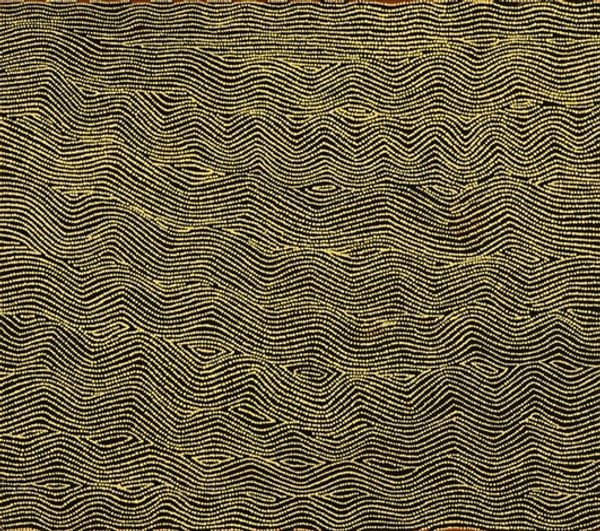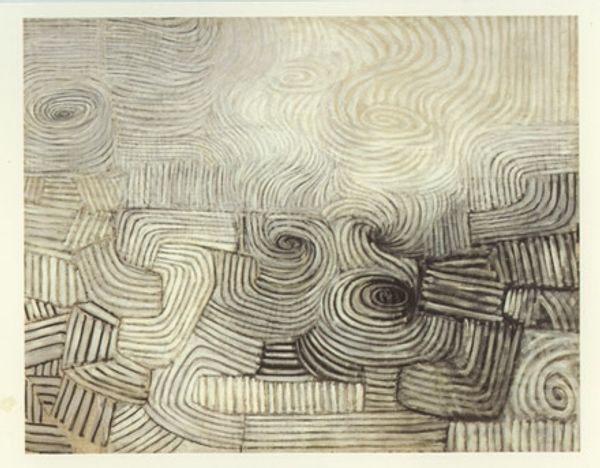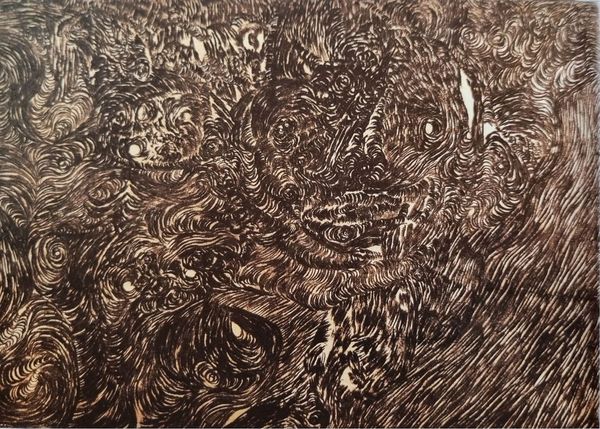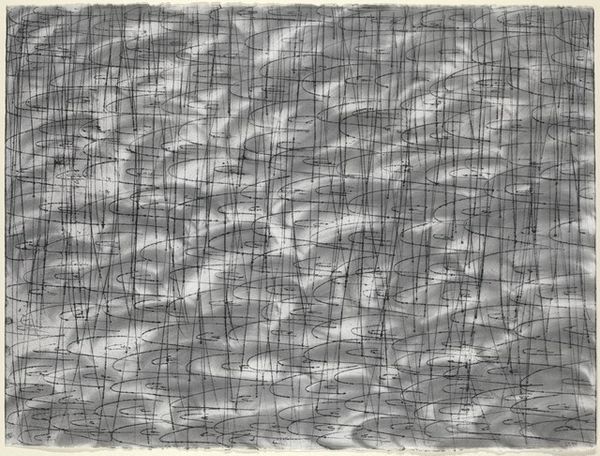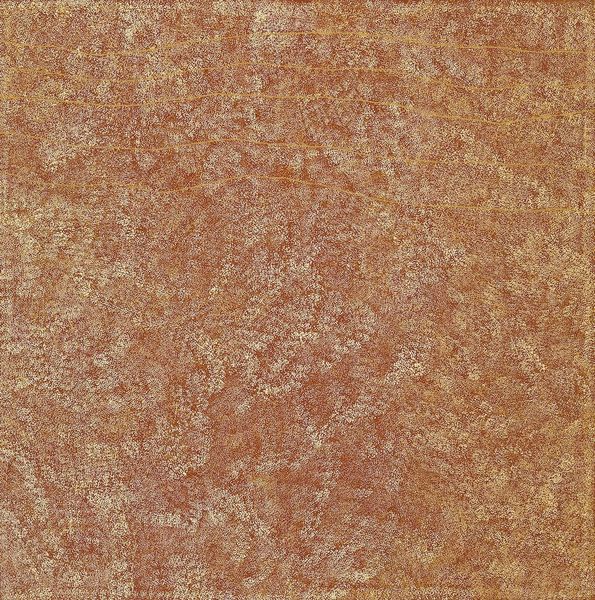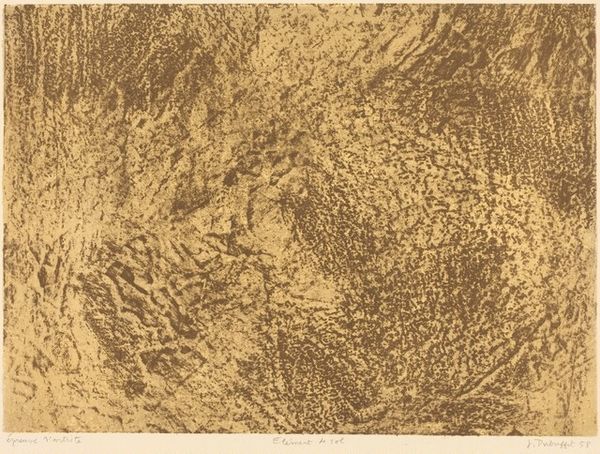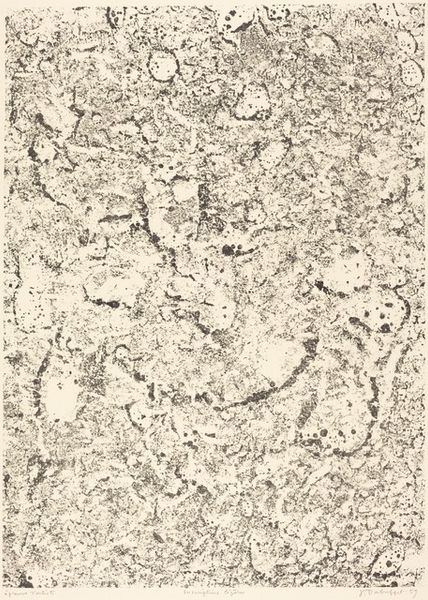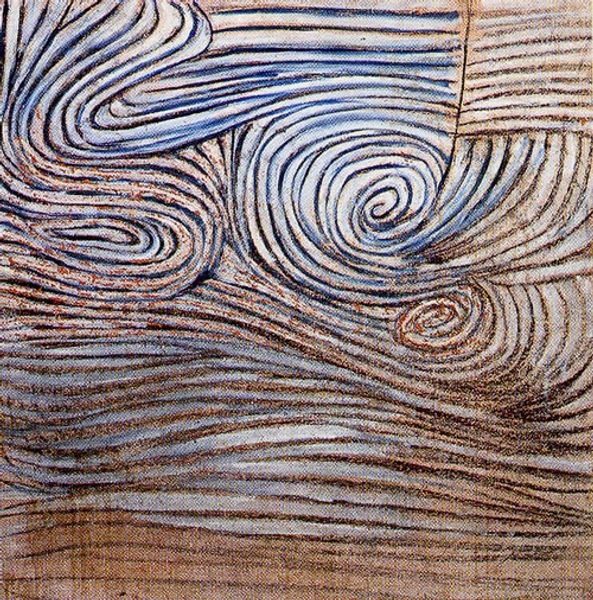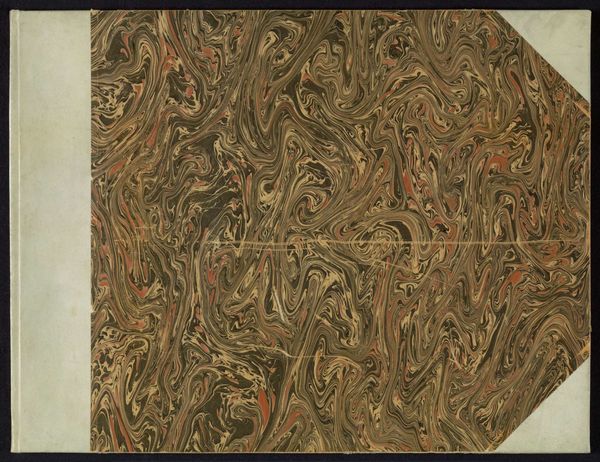
mixed-media, sculpture
#
mixed-media
#
organic
#
organic pattern
#
sculpture
#
matter-painting
#
abstraction
Copyright: Marko Pogacnik,Fair Use
Curator: This intriguing piece is called "Pop Article" by Marko Pogacnik, employing a mixed-media approach that blurs the line between sculpture and painting. My first impression is of sand, a windswept beach maybe, the sort of textured surface one wants to run their fingers across. Editor: The neutrality of the tones makes it look calming, almost meditative. The organic pattern really gives a sense of slow movement. It makes me think of maps that trace paths across natural resources, how people map onto nature to use it, especially because there’s this distinct chain tracing what looks like an oval shape. What significance does abstraction and "matter-painting" hold for this piece, in your opinion? Curator: I think Pogacnik is deliberately subverting the very idea of matter in a capitalist society through his embrace of what could be perceived as discarded waste. Matter-painting evolved as a way to re-engage with the materiality of the world outside of traditionally "valued" substances. Think about Arte Povera – this emphasis creates a powerful visual vocabulary. The formal grid that dictates painting becomes radically unfixed here. Editor: That’s fascinating. Considering his choice of abstraction, especially given that "Pop Article" engages in these "organic" themes, I find myself thinking about the way capitalism abstracts nature itself. It turns forests and minerals into "resources," quantifying them and then extracting their inherent value for economic gain. The central oval enclosed by what seems to be a metal chain becomes all the more suggestive in this light – we're presented not just with natural abstractions but also something more…confined. Curator: Confined…I like that. The chain evokes boundaries, control. Yet it sits within a background of apparent freedom, the flowing patterns. Perhaps that is the paradox Pogačnik seeks to explore. Editor: Yes. It feels particularly potent because it echoes the many visible and invisible structures by which communities become marginalized, denied agency over their own environments. So I have to wonder what Pogacnik sought to articulate when layering organic patterning with industrial form? Is this about calling to attention the politics behind representation of materials? Or more about how artists participate within commodity culture? Curator: Both, perhaps? I find the open questions more compelling. The artwork serves as a reflective surface prompting us to consider how such themes permeate our lived reality, beyond the confines of art galleries. Editor: It really gives me something to think about, the social role of organic materials as a representation in fine arts…I’ll have to reflect on it further. Curator: Likewise. A single artwork generating such wide associations—it reminds me of why I find my work so perpetually fascinating.
Comments
No comments
Be the first to comment and join the conversation on the ultimate creative platform.
